Yoshiwara is the most famous red-light district in Japan! The 300-year history and existing sex industry
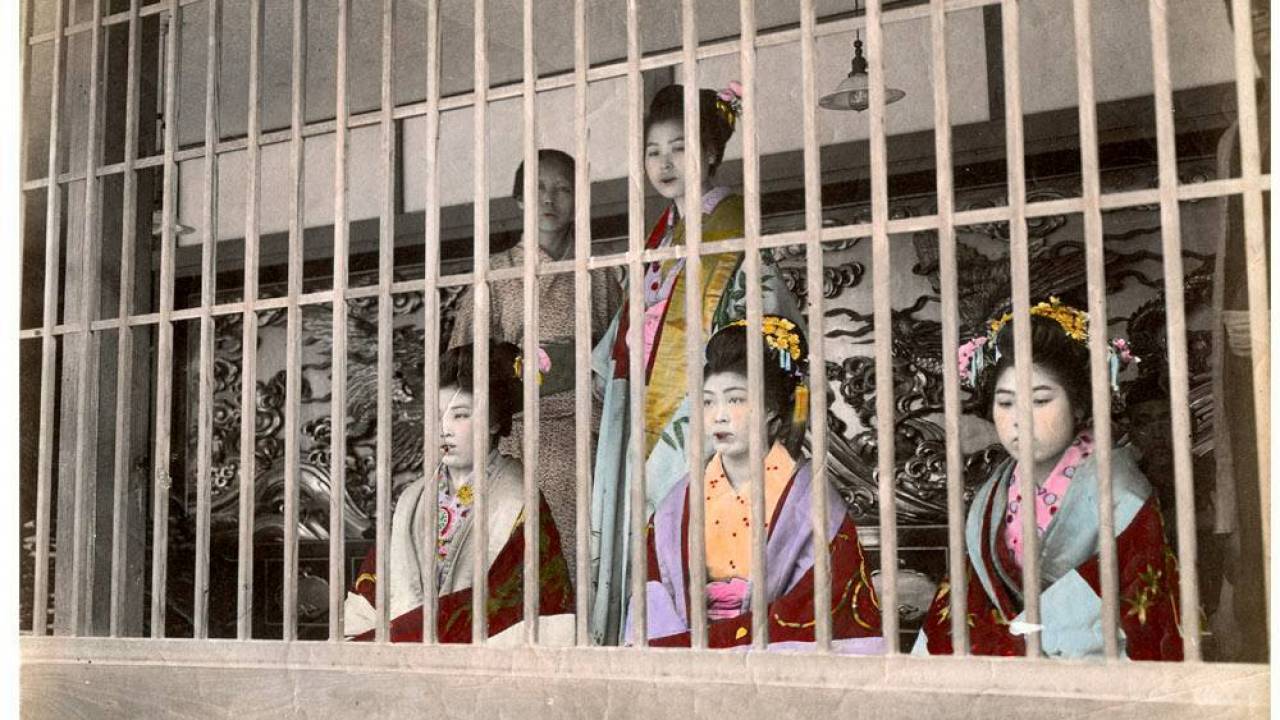
When you want to play in the Japanese brothel, the oldest and best known is probably Yoshiwara. Yoshiwara brothels were officially recognized by the Edo shogunate.
Originally located near Nihonbashi, it was relocated to Nihonzutsumi, behind Sensoji Temple, after the great fire of Mereki era. The former was called Moto-Yoshihara and the latter Shin-Yoshihara. Originally, part of the area was transferred from Nicho-machi brothel located in Sunpu Castle Town, the place where the great lord Tokugawa Ieyasu ended his life.
In the Meiji period (1868-1912) and later, social gatherings of the political and business world moved to geisha quarters (hanamachi) near the center of Tokyo, and the Yoshiwara brothels were gradually forced to shrink in size. The Yoshiwara brothels were also forced to shrink in size due to stricter regulations such as the Anti-Prostitution Law and the Entertainment Establishments Control Law.
However, there are still remnants of the brothels, and several brothels still stand in the area. At the same time, the area is also attracting attention as a sightseeing spot where visitors can feel the history of the Edo period.
The number of young people and families walking around the town has been increasing due to the fact that the area has been used as a stage for many anime and manga such as “Blade of the Demon” and others.
Characteristics and history of Yoshiwara brothels
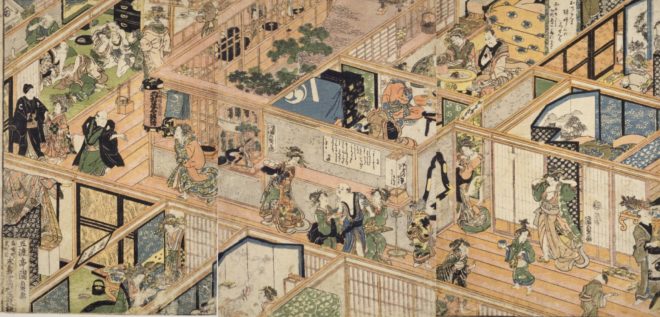
Yoshiwara brothels were officially recognized by the government and were special areas where prostitution could be legally practiced. The brothels also served the purpose of maintaining social order and preventing the spread of venereal diseases.
In Yoshiwara, there was only one gate for entry, and the comings and goings of prostitutes and customers were strictly controlled. Within the brothel, prostitutes operated within a multi-tiered class system, with oiran (courtesans) at the top of the hierarchy.
Oiran were women who were especially highly esteemed for their beauty, culture, and entertainment, and a hefty “dowry” was set for them. This system allowed prostitutes to buy back their freedom, often for enormous sums.
The brothels had a great influence on Japanese culture, and Yoshiwara in particular was depicted in many works of art, including ukiyoe prints and literature.
However, behind the glamorous atmosphere, prostitutes suffered from harsh living conditions and mental strain. In the Meiji period (1868-1912), Western-influenced ideas of human rights and opposition to prostitution gained momentum, and the brothel system, including the Yoshiwara brothels, was gradually abolished.
What is the half life of a prostitute(Yujyo)?
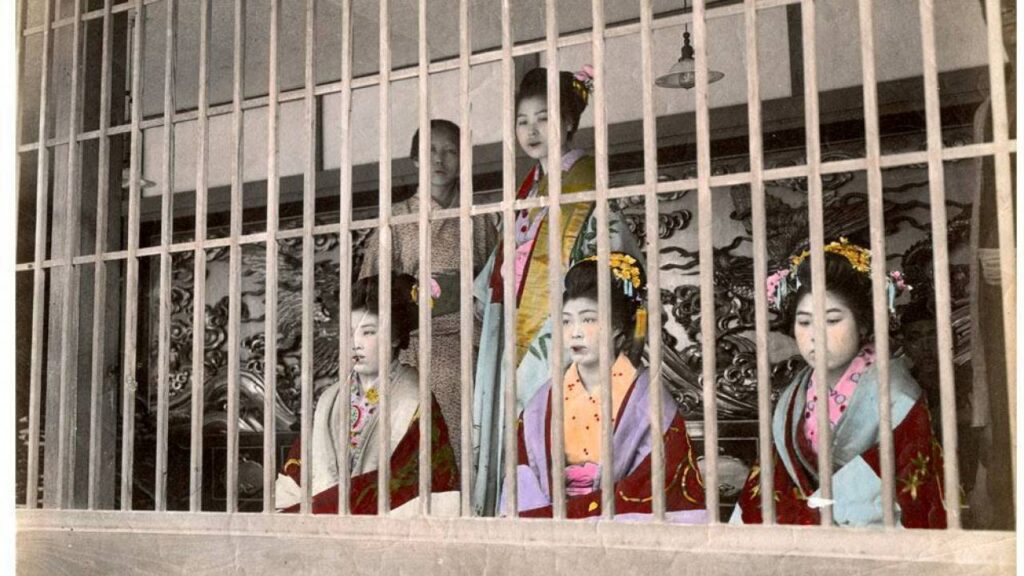
The half-life of a prostitute was often filled with harsh realities and hardships of life. The circumstances of becoming a prostitute varied, but generally it began with a family facing economic hardship that sold its daughter to a brothel. These women then lived in the strict class system of the brothel.
Women who became prostitutes first started as apprentices, called “kamuro,” and learned basic etiquette and performing arts. After that, they were allowed to take customers for the first time as “shinzou,” and were promoted to higher ranks according to their skills and good looks. The highest ranking prostitute was called an “oiran,” or courtesan, and received special treatment.
However, the life of prostitutes was extremely harsh. They were subjected to grueling labor, both physical and mental, and had little personal freedom. The life of a prostitute involved long hours of work and constant negotiations with customers, which exhausted many women and often resulted in illness.
The only way for prostitutes to gain their freedom was to be paid Miukekin, money needed to buy a geisha or prostitute out of bondage, or to wait for their contract to expire after a specified period of time. However, many prostitutes were bound to the brothels by debts, making it very difficult for them to gain their freedom.
Against this backdrop, the lives of prostitutes were full of sorrow, and their way of life has influenced many works of literature and art. While life in the brothels produced a glamorous culture, behind the scenes there existed the suffering and social restrictions of the prostitutes.
The acceptance fee is 500 million yen! What is an oiran?
Oiran were prostitutes of the highest rank in the brothels, who excelled in beauty and entertainment, were deeply educated, and possessed the highest level of customer service skills.
Oiran were more than just prostitutes; they were respected as symbolic figures of the brothel and as a kind of artist. To become an oiran, one needed tremendous training and achievement, and these women dressed in luxurious costumes, applied sophisticated makeup, and provided the highest level of customer service in the brothels.
Their hospitality was not only entertaining, but also valuable as a cultural performance.
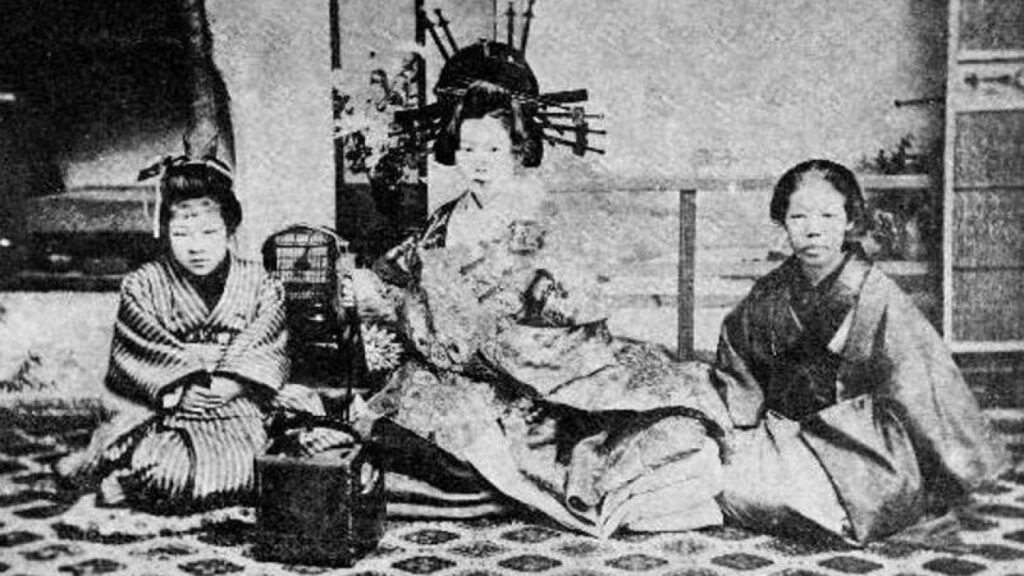
The “accepting money” is the amount of money needed to release a prostitute from the brothel and buy back her freedom. This amount was very high, reflecting their skill, popularity, and status in the brothel.
In the past, it is said that the amount of money paid was sometimes equivalent to several hundred million yen in terms of today’s value. For this reason, only extremely wealthy merchants, warriors, and a limited clientele were allowed to accept oiran (courtesans) as their guests.
The existence of oiran (courtesans) has been depicted in many ukiyoe and literary works as a symbol of the beauty, talent, and culture of the brothels, and has been handed down to the present as part of Edo culture. However, behind the glamorous life of the oiran, there was also the harsh reality of restricted personal freedom.
5 Sightseeing Spots to Feel the History of Yoshiwara’s Brothels
During the Edo period (1603-1868), the Yoshiwara brothels, located in present-day Tokyo, continued to attract many people with their glamorous atmosphere.
It once flourished as a hidden world where prostitutes lived, and there are spots that still retain a strong sense of its history. Here are five spots in particular that you should visit.
Yoshiwara Shrine, where the feelings of prostitutes are embedded
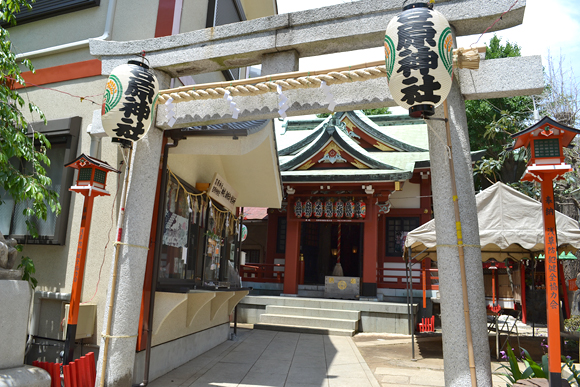
The shrine is located in the area where the brothels used to be located and is said to have been a place where the prostitutes could find comfort in their difficult lives and their hearts. The prostitutes of the Yoshiwara brothels faced many hardships, and the shrine was a place where they sought comfort and solace.
It is said that prostitutes visited the shrine to pray for health, happiness, and personal safety. They probably also prayed for their freedom. Even today, the shrine is known to visitors as a place that reminds them of the history of the Yoshiwara brothels and provides a valuable glimpse into the life of the brothels.
By visiting the shrine, visitors can think about not only the history of the brothel, but also the living proof of each and every prostitute and the lives of people in the Edo period. For tourists interested in culture and history, it may be an experience like stepping back in time.
Yoshiwara Benzaiten Hongu, where a sad history remains
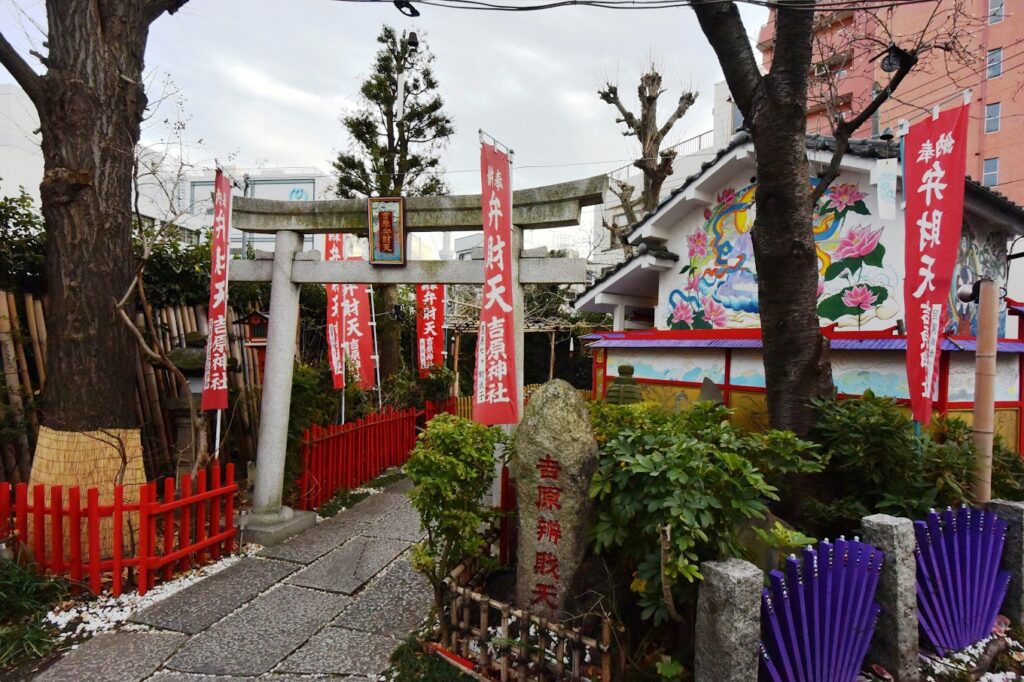
Yoshiwara Benzaiten Hongu is a shrine dedicated to Benten-sama, a goddess of the Yoshiwara brothels of the Edo period, a place steeped in sad history. It is said that prostitutes prayed to this Benten-sama for their own suffering, longings, and personal safety, as well as for freedom and to be taken into custody.
It is also known as the place where many prostitutes are said to have lost their lives in the tragedy of the Great Kanto Earthquake. It is a place that conveys the deep sorrow of the former Yoshiwara brothels to the present day.
In memory of the victims of the Great Kanto Earthquake, the Yoshiwara Kannon (Goddess of Mercy) was erected three years later to quietly watch over the place, and many people still visit to offer their prayers.
Eat and be energetic! Yoshiwara specialty, Sakura Nabe
Sakura nabe is a one-pot dish made with horse meat, and may have been served to visitors to brothels during the Edo period.
It is thought that the name “sakura nabe” came from the fact that horse meat is also called “sakura” (cherry blossom). It is said to have been popular as a meal to increase energy and to warm the body since that time.
In this nabe dish, thinly sliced horse meat is stewed in a broth seasoned with soy sauce, sugar, mirin, and other seasonings, and enjoyed with vegetables and tofu.
The broth, which blends the flavor of the meat with the sweetness of the vegetables, is said to warm the body and replenish energy. Even today, in some parts of Japan, sakura nabe made with horse meat is highly prized and eaten as a local dish.

There were more than 20 stores selling sakura nabe. As one of the few local dishes in Tokyo, sakura nabe was eaten both morning and night by stylish customers on their way to and from the Yoshiwara brothels. Even today, sakura nabe Nakae is popular as a famous sakura nabe restaurant with a history of more than 100 years.
What is the current form and content of the brothel in Yoshiwara?
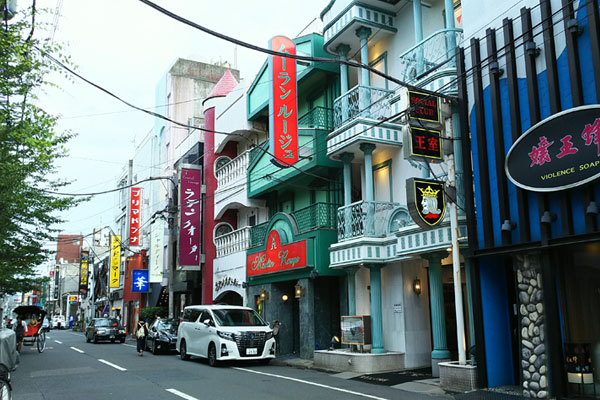
In present-day Yoshiwara, soapland is the main type of business, and this category offers a variety of price ranges and services.
For example, affordable budget stores start at 10,000 yen for a short time (about 40 minutes) and offer limited services in a short time.
Mid-range mass-market establishments offer a longer time (120 minutes) starting at 30,000 yen, allowing customers to fully enjoy the basic services that only a soapland can offer.
At high-end establishments, 120 minutes start at 50,000 yen, and the service here can be said to be among the finest in the country. Special emphasis is placed on training, and attention is paid to every detail, from careful customer service to skin care.
Can I trust the information in the Yoshiwara girls cast profiles?
Yoshiwara’s hours of operation are generally from sunrise to midnight. These hours vary depending on the season, with some stores opening earlier than usual during the summer months.
In addition, due to employee work schedules, some stores have fixed opening hours, so it is advisable to check the official website in advance.
Profile information may also differ from actual data. As for age indications, it is wise to assume that the actual age is at least 3 years older than indicated, as additions known as “Yoshiwara age” are common.
As for breast size, compare the profile with the photo and consider that it may be more exaggerated than it actually is. Especially if the background is strongly blurred, the body lines are likely to be adjusted and the bust size likewise tends to be displayed larger than it actually is.
Thus, reality and profile information may not always match in the Yoshiwara sex industry, but since each store offers different services and quality, it is important not to take the information for granted and to do sufficient research before visiting.
Let’s walk around Yoshiwara where you can feel the history.
By walking in Yoshiwara, visitors can feel the culture of the former brothels and their historical background. By strolling in this area, you can have a valuable experience that brings to life the face of the brothels that flourished during the Edo period.
We invite you to try sakura nabe, experience the customs, visit the shrine where prostitutes used to go, and feel the culture of Edo.
Also, if you want to call girls to the hotel you are staying at right now, please contact Aoyama Vergue. We have the most beautiful girls in Tokyo and will provide you with an unforgettable night.




